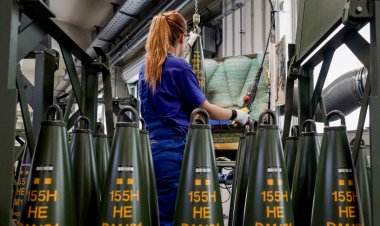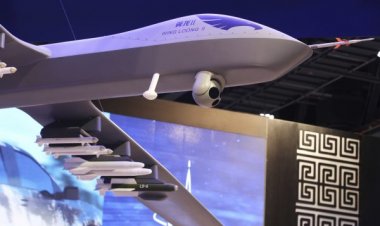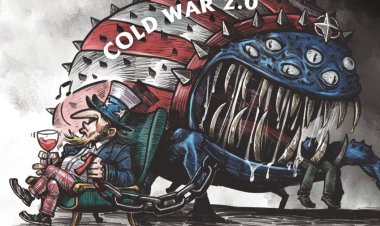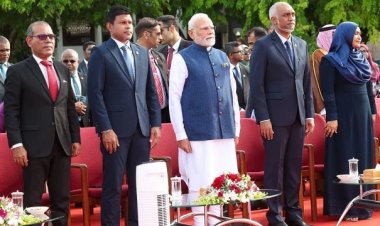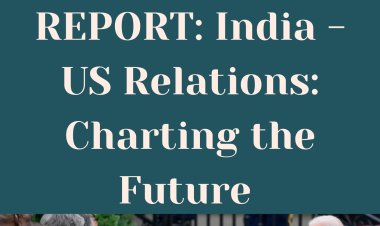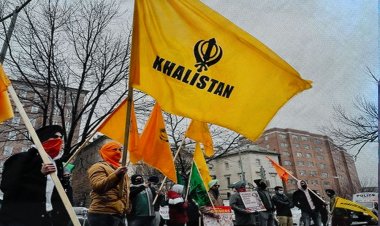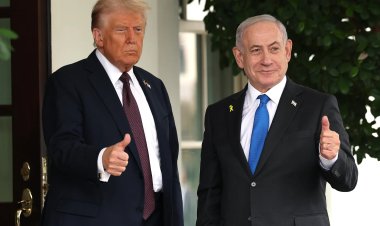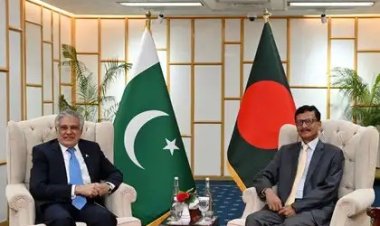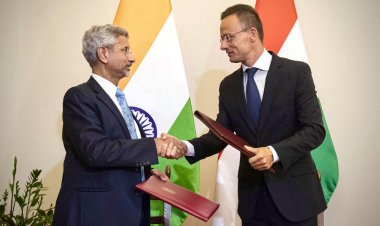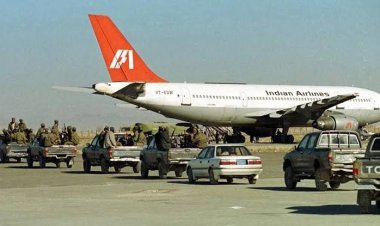India's Response to Drone Proliferation
If India wants to improve its drone capabilities, it cannot focus only on increasing the number of drones it owns. Lauding the potential of drones should be tempered with the proper knowledge of what they can and cannot do, and in what situations. There is a need for an entire ecosystem of extensive training, adequate number of dedicated hardware and software professionals, robust cybersecurity, and adequate ground control infrastructure including logistics and maintenance.
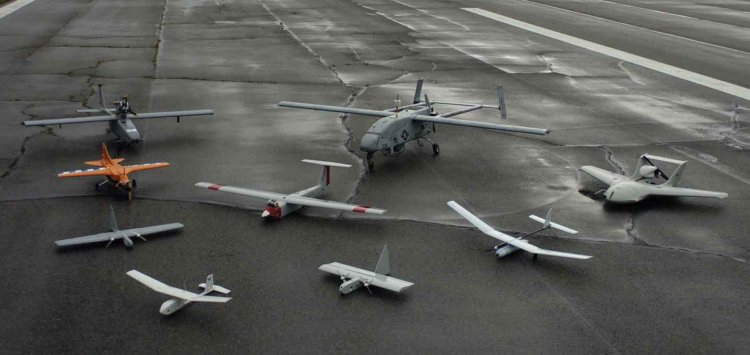
Analysis
By Mihir Vikrant Kaulgud
India has been steadily acquiring and developing armed and unarmed drone capabilities. It is also investing in anti-drone technology to protect itself from drones used against its interests by state and non-state actors. This article highlights three aspects of drone technology in the context of India’s acquisition of military drone technology:
- the uses of drones in security scenarios, and new developments within drone technology.
- The threats that drone proliferation creates, and responses to those threats.
- The legal and ethical dimensions of drone technology.
The article argues that India must adopt a “systems” perspective when it comes to developing drone and counter-drone technology. A systems perspective implies a holistic view of the entire system drones require to function effectively - including adequate infrastructure and trained professionals. Simply acquiring and upgrading unmanned aircraft is not enough. The systems perspective also includes proper regulations and protocols around civilian and military drone use. Moreover, this perspective requires taking the limitations and ethics of drone use seriously to prevent their indiscriminate use.
The use of drones in remote warfare has become increasingly commonplace over the last two decades. The sophistication and number of applications of this technology has steadily increased as well. Drones impact traditional security concerns such as warfare, as well as wider concerns with human and environmental security. The fact that drone proliferation spills over into civilian use affects security and strategic concerns of countries as well. Drones are often called Unmanned Aerial Vehicles (UAV) or Unmanned Aerial Systems (UAS). The latter term is preferred because it indicates that flying drones requires an entire system, such as ground control, operators, software, and network infrastructure. This article will use the term “drone” as it is perhaps more widely used outside of technical circles. Drones are often classified by weight from nano (upto 250g) to large (above 150 kg). Other classifications are based on their range or their aerial platform (fixed wing, single or multi rotor.) While the US is the most well-known user of drones, over 95 countries have access to military drones - 35 of which operate armed drones.
The most common usage of drones is for providing surveillance. Most drones are equipped with several cameras and sensors which record footage and other information. The surveillance can be tracked real-time by crews that are insulated from combat zones. Furthermore, drones can fly over target areas for long periods of time - more so than manned aircraft. This allows for sustained surveillance, which might not have been possible before. They can also be deployed to support troop operations on the ground. Furthermore, small lightweight drones are being used to provide logistical support to these troops, such as ammunition or medical supplies. This potentially increases the staying power of the troops and allows them to function with greater tactical awareness.
The biggest advantage of using drones from a military standpoint is the reduction of casualties. Less soldiers are put in harm’s way, with drone operators controlling drones from a safe location. More generally, the cost of deploying drones is significantly less than deploying manned aircraft. As technology develops, especially indigenous technology, the cost will be driven down further. Armed drones have been used to kill high value targets when a manned mission would have been costly or too risky. The precision striking capabilities have improved over time. Armed drone proliferation has been increasing, with Israel, Turkey and China readily exporting their machines with fewer restrictions than other countries with armed drones like the US. There is some speculation that possessing more advanced drone technology can increase diplomatic leverage over a state that does not. Drone swarms and kamikaze drones are newer developments which increase the tactical possibilities of using UAVs. They can evade enemy air-defense systems more effectively than a single medium or heavy drone.
India has been buying Heron drones from Israel for improving its surveillance capabilities, and is also looking to upgrade them to be armed. The Heron drones are being deployed in Ladakh to monitor Chinese activity along the border. Recently, India made a $3 billion deal to purchase 30 Predator drones from the United States. India also has swarm drone capabilities - it displayed a swarm of 75 small drones doing simulated attacks on Army Day in January 2021. It aims to have a swarm of 1000 drones. The 75-drone swarm can carry a variety of payloads from explosives to supplies weighing upto 600 kg. India is also investing in its domestic drone industry. The DRDO is developing indigenous drones called Rustom and Rustom 2. Increasingly, private firms have also been contracted to provide equipment. The drone swarm was also indigenously developed, as is the Switch UAV which is set to be deployed for high-altitude surveillance. More recently, as part of 73rd Republic Day celebrations on January 26, 2022, a thousand Made in India drones were on display in different formations.
There are also non-military uses of drones, such as in agriculture and providing medical care and humanitarian assistance. Thus, drones also have security implications in terms of improving human security in disaster management, and long-term environmental security. This is facilitated by the fact that drone proliferation is not limited to state actors, but civilians and non-state actors as well. Small drones and/or the parts to make them can be easily purchased online. In India, drones have been deployed to assist with implementing COVID-19 lockdowns and to make announcements about pandemic measures. They have also been used to spray insecticides in anti-locust operations in Rajasthan. Law enforcement agencies used drones during the 2019 Delhi riots to monitor crowds. Floods in Uttarakhand saw drones being used for search and rescue operations.
It is precisely the relative ease of access to drones that makes their proliferation a security threat. While antagonistic states operating drones are always a threat to each other, malicious non-state actors like terrorist organizations can also use drones. They can be purchased and transported quite easily, or crude drones can be made using parts bought online. Even small drones provide an offensive edge to their operations, while making effective defense tactics difficult. They present lower costs and risks, while also being multiuse and reusable. They improve surveillance capabilities, which can assist terror attacks. Military drones can potentially be captured, or reverse engineered. For example, ISIS has been known to use both surveillance drones and armed or booby-trapped drones.
In India, there have several instances of drones posing a security threat. The most prominent is the attack on an air station in Jammu in June 2021, where a drone dropped explosives near an aircraft hangar. There is speculation that this attack was conducted by Lashkar-e-Taiba. Drone sightings are common along sensitive border areas along Pakistan and China. This is worrying since states may be likely to attack indiscriminately due to the cost-effectiveness of drones, and lower risk to their soldiers. Moreover, drones have been known to smuggle narcotics and arms across the border into India. To counteract these threats, India has been investing in acquiring counter-drone technology. It is importing from Israel, while developing indigenous solutions through DRDO and domestic private firms. Therefore, it is evident that drone acquisition in India is well underway, as is the acquisition of counter-drone technology. As of February 9, 2022, the government of India banned the import of drones other than for defense and R&D purposes, which will require prior clearance.
But there are limitations and challenges that need to be kept in mind. Drones are not a “silver bullet.” Only acquiring a greater number of UAVs is not the way forward. To deploy them effectively, India must keep in mind the limitations and challenges presented by drones. It is extremely necessary to not become over-confident about every new military technology acquisition. One of the limitations of the current generation of drones is their significantly reduced speed compared to fighter aircraft. This limits their use against combatants with good air-defense systems, as they can easily be shot down. Furthermore, most drones do not have air-to-air capabilities. Therefore, traditional fighter aircraft still have the edge when it comes to maneuvering and self-defense. Other limiting factors of drones are its dependence on IT infrastructure, which introduces the risk of hacking or jamming the signal between the controller and the drone. Drone activity can potentially be spoofed as well.
The human element behind drones cannot be ignored. Drone pilots, especially those who fly armed drones, must be highly trained. There have been reports of burn-out and stress disorders among the pilots. They have extremely long shifts, accumulating flight time that is three times as much as regular pilots. Over the years, the U.S Air Force - the most prolific user of drones - has reported shortages in trained pilots, with many active-duty servicemen leaving due to burn out, stress and/or trauma. Furthermore, surveillance drones capture too much video footage making it difficult to properly process it. It is untenable to employ the number of analysts required to properly review all of it. The information-processing limit can be transgressed by using computer monitoring. But decisions regarding risk-assessment and identification of targets cannot be completely delegated to computer programs. There is an ethical dimension to drone use that also needs to be taken seriously as the government develops its offensive drone capabilities as well as counter-drone technology:
- Drones present privacy concerns, as they can capture images and videos that can infringe on people’s privacy. Though this is usually more the case with civilian drone users, it is potentially important to address this as part of developing protections against abuse of drones by non-state actors e.g. domestic insurgents.
- Civilian casualties or “collateral damage” - a state’s own soldiers are protected, however other civilians are “sacrificed” for killing one or more terrorists. This creates a culture of terror in the civil society in areas where drones are frequently deployed.
- Ethical and moral dimension of killing at a distance, and the notion of “just war” - although more research is needed on this question
- Improper targeting protocols and operational practices - gray zone practices like “signature strikes” - judging whether people are insurgents based on certain appearance or behavior - not because they are on an official “kill list.” “Double tap” strikes launch subsequent attacks on those who help the initial target, assuming those who help are also associated with the target. In this way, bystanders who tried to help the target of a drone strike without any knowledge of the situation have been killed. Funeral processions have been targeted, killing many innocent civilians.
- A state can use drones to increase surveillance and target its own population who are perceived as insurgents or threats to domestic peace. They can be used to serve authoritarian governments who seek to repress sections of a state’s population. Indiscriminate and improper use can create tensions within the international community in the form of diplomatic hurdles and economic sanctions.
This ethical dimension points to the need for regulations and a legal framework for drones, including export regulation (whom drones are exported to), and especially rules of engagement and strict protocols especially when it comes to targeted strikes - this is also part of the overarching “system” that drone use should be developed with. There should be transparency and accountability, not secrecy.
India has updated its “Drone Rules” as of August 2021. This is the legal framework for all drones operated in, or over, India. With the aim of giving a boost to the drone industry in India, the update effectively liberalized drone acquisition and operation. According to Prime Minister Modi, “the rules are based on the premise of trust and certification.” Registration and approval process has been simplified. There are no licenses needed for non-commercial use of nano (less than 250g) and micro (less than 2kg) drones. Research and development firms can also acquire, develop, and operate drones more easily. However, the new rules do not mention drone swarms, images recorded by drones, or deliveries conducted via drones.
While the motives of the Drone Rules are clearly economic advancement, there have also been calls to control drone proliferation in India owing to the security threats they present. After the drone attack on the Jammu air station, Army Chief General M.M. Navarane called drone proliferation a challenge which the Indian military must respond to, as malicious actors can easily make and use drones as if they are a “do-it-yourself home project.” There are a few gaps in the Drone Rules, which can be addressed to ensure security threats are reduced. The requirement of a unique identification number has been scrapped, making the monitoring and regulation more difficult. The Rules must also address incident response protocols for police, including support for bringing rogue drones down effectively. Another urgent need is for protocols to monitor drone traffic and ensure drones do not fly into potentially dangerous or sensitive areas like airports and army bases. The Army and Air-Force should be consulted while making these regulations, which also have security repercussions. Concerns of drones infringing on the privacy of individuals and trespassing on private property must also be addressed. There needs to be regulations for government agencies using drones for surveillance to prevent abuse of power.
Therefore, if India wants to improve its drone capabilities, it cannot focus only on increasing the number of drones it owns. Lauding the potential of drones should be tempered with the proper knowledge of what they can and cannot do, and in what situations. There is a need for an entire ecosystem of extensive training, adequate number of dedicated hardware and software professionals, robust cybersecurity, and adequate ground control infrastructure including logistics and maintenance. Therefore, there cannot be a focus only on what drones do but also how they function. Thus a “systems” perspective regarding drones is ultimately more suited to ensuring effective deployment of drones. While the limits vis-a-vis speed and air-to-air capabilities can be addressed through technical upgrades, this also represents rising costs. These costs cannot be justified without the proper ecosystem in which drones can be deployed effectively.
Disclaimer: This paper is author’s individual scholastic contribution and does not necessarily reflect the organization’s viewpoint.


